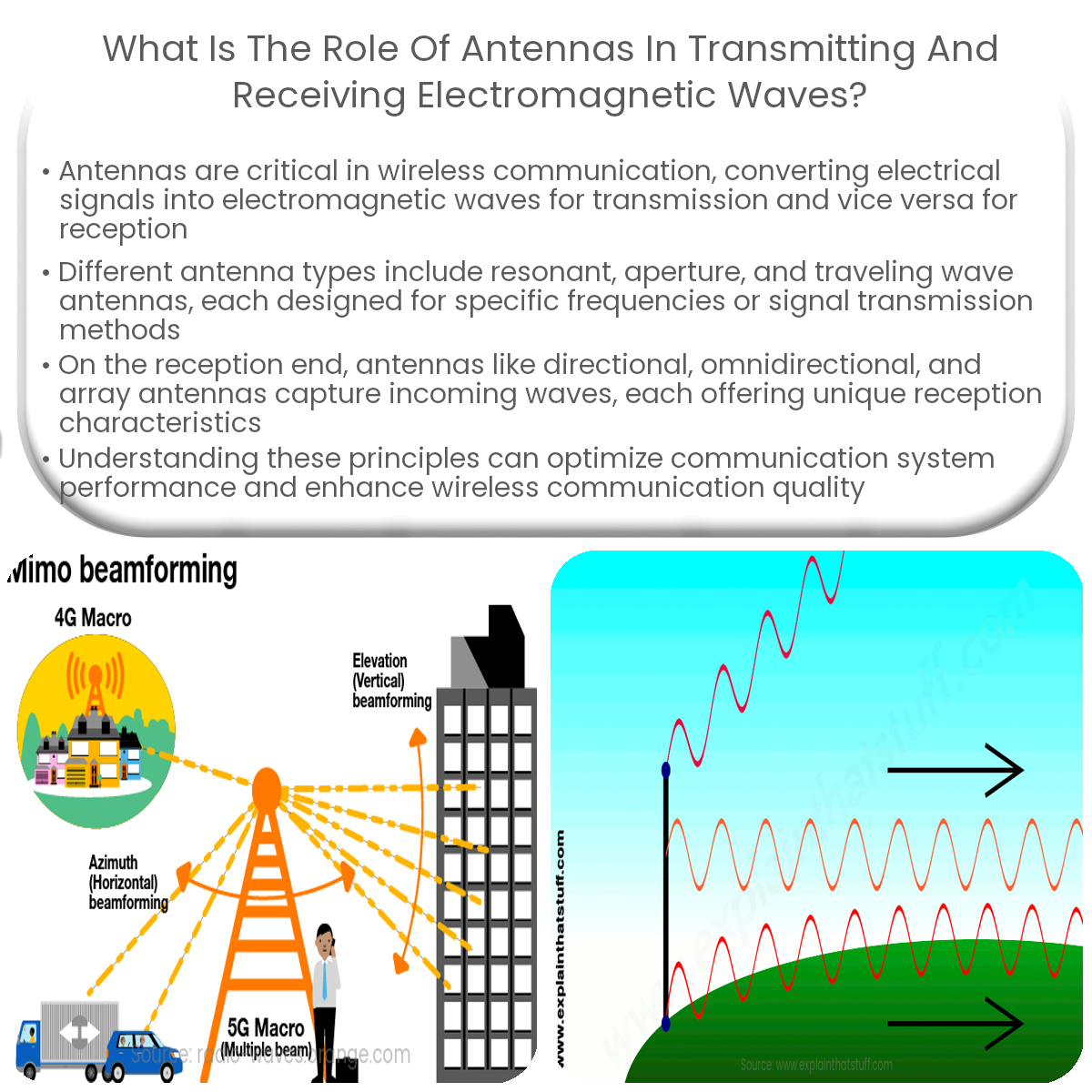Antennas transmit and receive electromagnetic waves by converting electrical signals into waves and vice versa, enabling wireless communication.
The Role of Antennas in Transmitting and Receiving Electromagnetic Waves
Antennas are essential components in wireless communication systems, enabling the transmission and reception of electromagnetic waves. They convert electrical signals into electromagnetic waves and vice versa, playing a crucial role in the efficient exchange of information between devices.
Transmitting Electromagnetic Waves
When an antenna is used to transmit electromagnetic waves, an electrical signal is provided to the antenna by a transmitter. This electrical signal is an alternating current (AC) that generates an oscillating electromagnetic field around the antenna. As the electromagnetic field expands and contracts, it creates electromagnetic waves that radiate outward from the antenna.
- Resonant Antennas: These antennas are designed to operate at specific frequencies, with their length corresponding to a half or quarter wavelength. Examples include dipole and monopole antennas.
- Aperture Antennas: These antennas have a physical opening through which electromagnetic waves are transmitted, such as horn and parabolic antennas.
- Traveling Wave Antennas: In these antennas, the electrical signal travels along the antenna structure, generating electromagnetic waves as it goes. Examples include helical and Yagi-Uda antennas.
Receiving Electromagnetic Waves
When an antenna receives electromagnetic waves, it captures the energy of the incoming waves and converts it back into electrical signals. This process is essentially the reverse of transmission, with the electromagnetic waves inducing an alternating current in the antenna. The electrical signal is then passed to a receiver for further processing and decoding.
- Directional Antennas: These antennas are designed to receive signals from a specific direction, filtering out unwanted signals from other directions. Examples include Yagi-Uda and parabolic dish antennas.
- Omnidirectional Antennas: These antennas receive signals from all directions, making them suitable for applications where the direction of the incoming signal is unknown or constantly changing. Examples include dipole and monopole antennas.
- Array Antennas: These antennas consist of multiple individual elements combined to form a larger antenna system, enhancing reception capabilities. Examples include phased array and MIMO antennas.
In summary, antennas play a vital role in the transmission and reception of electromagnetic waves, enabling wireless communication between devices. There are many different types of antennas, each designed for specific purposes and operating at various frequencies. By understanding the underlying principles of antenna operation, it is possible to optimize the performance of communication systems and enhance the overall quality of wireless communication.


